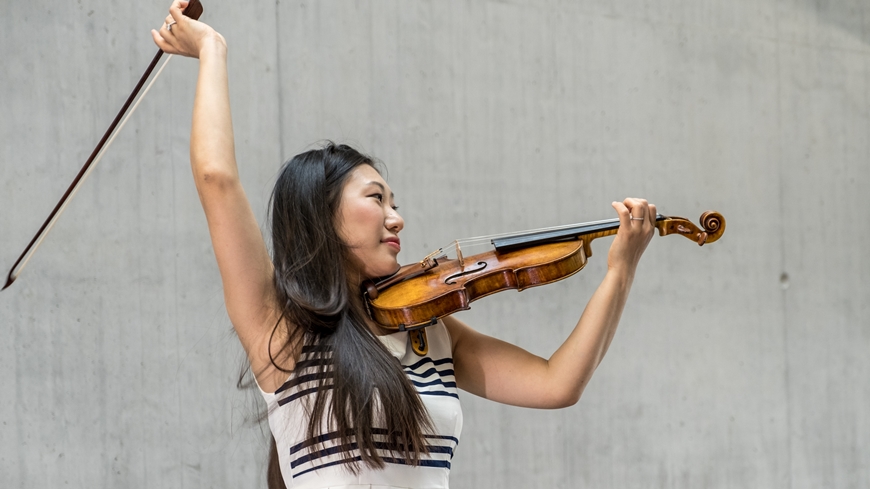Mycowood instruments
Biotech violin steps into the limelight
It is amazing what kind of magical sounds can be elicited from a piece of wood treated with fungi. The biotech violin, whose tonewood has been developed at Empa, is now taking to the concert stage with violinist Irina Pak.

From the laboratory to the concert stage – this step is now being taken by the mycowood violin Caspar Hauser II. In a long-term research project, the team led by Empa researcher Francis Schwarze has developed a process, in which a white rot fungus breaks down wood cells in a targeted manner. The process makes it possible to change the acoustic properties of tonewood. In this way, the so-called mycowood that gave the Caspar Hauser II its body was produced in Empa's Cellulose & Wood Materials lab in St. Gallen. The instrument is an exact copy of a Guarneri violin from 1724. The antique master violin was built by Guarneri del Gesù (1698 – 1744), who, like his contemporary Stradivari, created instruments in Cremona, Italy, that were sought-after for their special sound. First comparative acoustic analyses of the original and its biotech copy have been promising.
Before and after
Audio sample for comparison: The same piece of music is played on an untreated violin and on an instrument that has been incubated in a fungal solution for nine months. To hear the difference, click the buttons. Image: Empa
A musical instrument has to be played
In order for the Caspar Hauser II to develop a unique soul in addition to its extraordinary body, the instrument will now be allowed to develop its sound through consistent playing over the coming years. Violinist Irina Pak of the Tonhalle Orchestra Zurich recently received the instrument on loan from Empa in Dübendorf. From its "birthplace", the biotech violin will now be allowed to step into the limelight with Irina Pak for five years. During this time, the development of the sound quality will also be monitored by regular acoustic tests. "I am very pleased that the violin will now leave its cradle in the lab and be allowed to prove itself on stage with an excellent musician," says Francis Schwarze.
Last year, Walter Fischli, Chairman of the Board of Trustees of the foundation of the same name in Allschwil (BL), had given the mycowood violin Caspar Hauser II as a donation to Empa. The foundation has long supported the research project at Empa and is committed to promoting young talents by building mycowood violins. To celebrate the handover, Irina Pak had already had the opportunity to get to know the biotech violin. The violinist elicited contemporary sounds from the new violin as well as baroque melodies from the time when the original violin was built.
Extraordinary tonewood from Europe
The interdisciplinary project aims to improve the acoustic properties of tonewood in a reproducible way and under standardized conditions. This type of biotech wood modification could also avoid supply bottlenecks or shortage supplies for valuable tonewood, Schwarze said. The goal, he stresses, is to transform good raw material into exceptional tonewood and thus promote traditional musical instrument making in Europe.
Prof. Dr. Francis Schwarze
Cellulose & Wood Materials Laboratory
Phone: +41 58 765 72 47
rancis.Schwarze@empa.ch
Biotech violins: Sinfonia ai funghi
FWMR Schwarze, H Morris; Banishing the myths and dogmas surrounding the biotech Stradivarius; Plants, People, Planet (2020)






